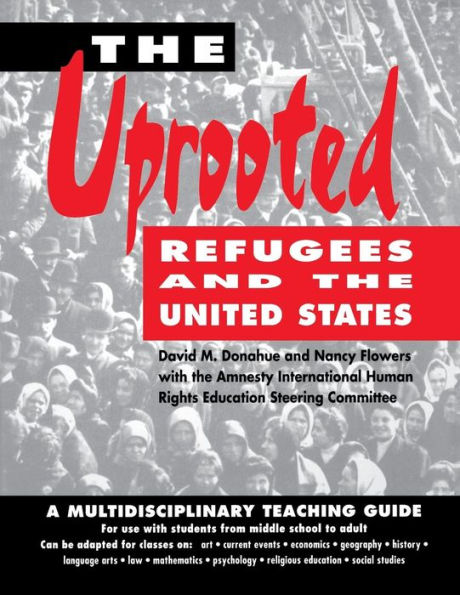Despite the United States' historic role as "Mother of Exiles," most American cannot distinguish between a refugee and an immigrant. At a time when powerful voices are questioning the nation's ability and obligation to accommodate those who have come to the U.S. (between 1975 and 1992 more than 1.7 million refugees were resettled in the United States), this legal and moral distinction becomes imperative.
Refugees do not want to leave their country. The forces that drive them to flee are human rights issues: armed conflict, economic and social injustice, and political persecution. A complex subject like refugees—and how they must be treated—requires education and needs to be approached through many disciplines and thoughtful examinations.
Teaching sensitivity and awareness
Written by members of Amnesty International, this teaching guide offers educators and group leaders information, activities, and strategies for teaching about refugees in the United States. The material is appropriate for any learning setting: schools, adult civic groups, youth organizations, or English as a Second Language (ESL) courses.
The goal of The Uprooted program is to help students examine the plight of refugees by providing information, building empathy, stimulating social action, and exploring different paths toward conflict resolution. Activities have been developed to:
- Put a human face on facts about political and economic instability, and examine the emotional trauma of flight, loss, and exclusion.
- Promote informed, critical thinking as a function of U.S. and world citizenship.
- Affirm a humane concept of justice and look at the responsibility everyone has to respect and protect the rights of others.
- Help students express themselves with verbal precision and factual accuracy.
- Show ways to approach other complex global and national issues.
All of the activities can be used independently, and each is accompanied by full background information, ready-to-use handouts (such as flash cards and maps) that can be copied for students or reproduced as overhead transparencies, estimated time needed, and suggestions for further studies and action by students. Also included are a teaching bibliography and filmography, a list of refugee organizations, and resources, and a copy of the United Nations Declaration of Human Rights.
All royalties from the purchase of this book go to the non-profit organization Amnesty International, and support their ongoing struggle for human rights around the world.
Despite the United States' historic role as "Mother of Exiles," most American cannot distinguish between a refugee and an immigrant. At a time when powerful voices are questioning the nation's ability and obligation to accommodate those who have come to the U.S. (between 1975 and 1992 more than 1.7 million refugees were resettled in the United States), this legal and moral distinction becomes imperative.
Refugees do not want to leave their country. The forces that drive them to flee are human rights issues: armed conflict, economic and social injustice, and political persecution. A complex subject like refugees—and how they must be treated—requires education and needs to be approached through many disciplines and thoughtful examinations.
Teaching sensitivity and awareness
Written by members of Amnesty International, this teaching guide offers educators and group leaders information, activities, and strategies for teaching about refugees in the United States. The material is appropriate for any learning setting: schools, adult civic groups, youth organizations, or English as a Second Language (ESL) courses.
The goal of The Uprooted program is to help students examine the plight of refugees by providing information, building empathy, stimulating social action, and exploring different paths toward conflict resolution. Activities have been developed to:
- Put a human face on facts about political and economic instability, and examine the emotional trauma of flight, loss, and exclusion.
- Promote informed, critical thinking as a function of U.S. and world citizenship.
- Affirm a humane concept of justice and look at the responsibility everyone has to respect and protect the rights of others.
- Help students express themselves with verbal precision and factual accuracy.
- Show ways to approach other complex global and national issues.
All of the activities can be used independently, and each is accompanied by full background information, ready-to-use handouts (such as flash cards and maps) that can be copied for students or reproduced as overhead transparencies, estimated time needed, and suggestions for further studies and action by students. Also included are a teaching bibliography and filmography, a list of refugee organizations, and resources, and a copy of the United Nations Declaration of Human Rights.
All royalties from the purchase of this book go to the non-profit organization Amnesty International, and support their ongoing struggle for human rights around the world.

The Uprooted: Refugees and The United States
224
The Uprooted: Refugees and The United States
224Paperback(1st ed)

Product Details
| ISBN-13: | 9780897931229 |
|---|---|
| Publisher: | TURNER PUB CO |
| Publication date: | 12/01/1995 |
| Edition description: | 1st ed |
| Pages: | 224 |
| Product dimensions: | 8.50(w) x 11.00(h) x (d) |
| Age Range: | 12 - 17 Years |
